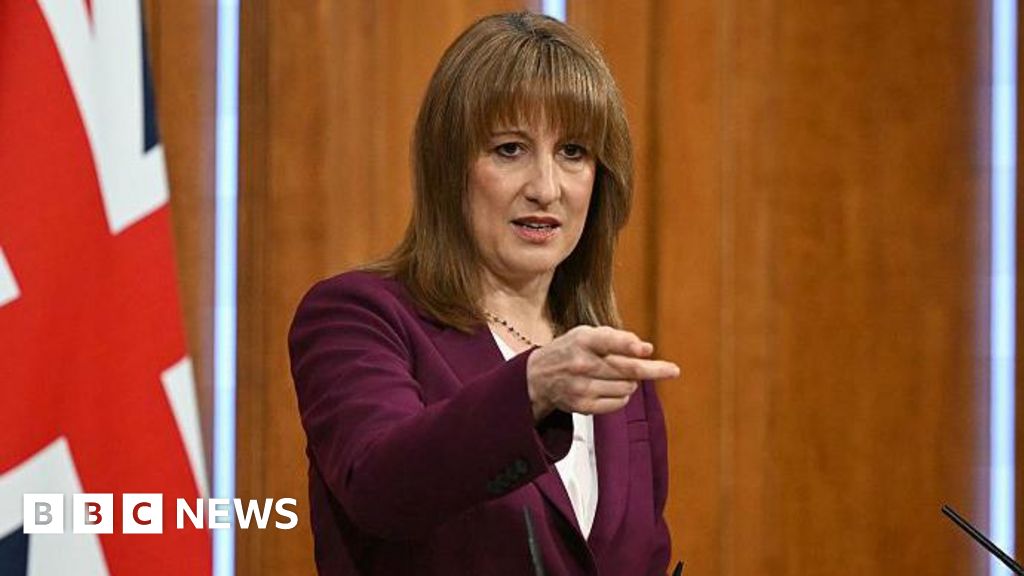Business
RBI Issues Guidelines On Authentication Mechanisms For Digital Payment Transactions
)
New Delhi: The Reserve Bank of India (RBI) on Thursday released draft guidelines on the authentication mechanism framework for digital payment transaction authentication that will come into effect from April 1, 2026.
The Central Bank said the feedback from the public has been examined and suitably incorporated in the final directions.
The directions focus on encouraging introduction of new factors of authentication by leveraging upon technological advancements.
The framework, however, does not call for discontinuation of SMS-based OTP as an authentication factor.
The aim is also to enable issuers to adopt additional risk-based checks beyond the minimum two-factor authentication based on the fraud risk perception of the underlying transaction and facilitate interoperability and open access to technology, along with delineating the responsibility of Issuers.
The draft guidelines also mandate card issuers to validate AFA in non-recurring cross-border CNP transactions whenever such a request is raised by the overseas merchant or acquirer.
The RBI says that all digital payment transactions in India are required to meet the norm of two factors of authentication. While no specific factor was mandated for authentication, the digital payments ecosystem has primarily adopted SMS-based One Time Password (OTP) as the additional factor.
“All digital payment transactions shall be authenticated by at least two distinct factors of authentication, unless exempted. Issuers may, at their discretion, offer a choice of authentication factors to their customers in compliance with these directions,” according to the RBI.
“It shall be ensured that for digital payment transactions, other than card present transactions, at least one of the factors of authentication is dynamically created or proven, i.e., the proof of possession of the factor, being sent as part of the transaction, is unique to that transaction. The factor of authentication shall be such that compromise of one factor does not affect reliability of the other,” it further added.
Also, system providers and system participants will offer authentication or tokenisation service that is accessible to all the applications and token requestors functioning in that operating environment for all use cases and channels or token storage mechanisms.
Business
Airlines warn flight cancellations will continue even after shutdown ends

A board shows two cancelled American Airlines flights and three on time at Logan International Airport in Boston, Massachusetts, U.S., Nov. 7, 2025.
Brian Snyder | Reuters
Flight disruptions that have marred air travel for millions of people in recent weeks could continue even after the government shutdown ends, airlines and the secretary of Transportation said.
The Senate on Monday night passed a bill that could end the longest federal government shutdown in history, sending it to the House for a vote.
But Transportation Secretary Sean Duffy said Tuesday that won’t be an immediate fix.
“We’re going to wait to see the data on our end before we take out the restrictions in travel but it depends on controllers coming back to work,” Duffy said at a press conference at Chicago O’Hare International Airport.
Duffy also warned severe disruptions over the past few days could get much worse without a deal.
The Senate vote came as staffing shortages of air traffic controllers, who are required to work without their regular paychecks in the shutdown, have delayed or canceled thousands of flights, with issues worsening in recent days. Controllers missed their second full paychecks of the shutdown this week, and some have taken up second jobs and are working with increasing levels of stress, government and union officials have said.
Even if the House passes the bill that will fund the federal government through January, airlines said they will need time to readjust.
“Airlines’ reduced flight schedules cannot immediately bounce back to full capacity right after the government reopens,” Airlines for America, a lobbying group for airlines including Delta Air Lines, United Airlines, American Airlines and Southwest Airlines, said late Monday. “It will take time, and there will be residual effects for days. With the Thanksgiving travel period beginning next week and the busy shipping season around the corner, the time to act is now to help mitigate any further impacts to Americans.”
Airlines will need time to reconfigure schedules and position planes and crews, something they were forced to quickly address with last week’s required flight cuts.
More than 5 million travelers have been affected by airline staffing issues since the shutdown began on Oct. 1, Airlines for America said . The disruptions have sent some passengers looking for alternatives, from buses to rental cars and even private jets.
Last Friday, the Trump administration started requiring commercial airlines to cut 4% of their domestic flights at 40 busy U.S. airports, with larger reductions on the way if the shutdown doesn’t end, as officials blamed the strain on air traffic controllers.
Aviation groups have said that record numbers of travelers are expected for the Thanksgiving period, with the holiday just over two weeks away.
Just over 5% of the scheduled 22,811 U.S. departures were canceled on Tuesday, a relatively light day for travel generally, according to aviation data firm Cirium. That’s down from an 8.7% cancellation rate on Monday, or 2,239 flights, and 2,633 cancellations on Sunday, or 10.2% of the schedule. Delays had also piled up with staffing shortages and bad weather at major hubs, including Chicago O’Hare.
The shutdown, like the one in late 2018 to early 2019, has thrust aviation’s strains into the spotlight. The previous shutdown, however, ended hours after a shortfall of air traffic controllers snarled air traffic in the New York area.
Aviation groups on Tuesday urged lawmakers to not only end the shutdown but to provide more Department of Transportation funding to help modernize air traffic control and hire more controllers, who were in short supply even before the shutdown began.
“The government shutdown has disrupted that work and slowed the strong momentum we have built for modernization,” the Modern Skies Coalition, which includes major airline, airport and aerospace groups such as Boeing, GE Aerospace and others, as well as labor unions, wrote in an open letter to Congress.
President Donald Trump on Monday threatened to dock pay of air traffic controllers who are absent. “All Air Traffic Controllers must get back to work, NOW!!!,” he wrote in a post on Truth Social, adding that he would recommend $10,000 bonuses for any air traffic controllers who weren’t absent during the shutdown.
Duffy said he supported Trump’s idea and that he was concerned about the dedication and “patriotism” of controllers who haven’t shown up for work. “If we have controllers who systemically weren’t doing their job, we will take action,” he said.
Duffy said controllers would receive about 70% of their pay within two days of the shutdown ending.
A day earlier, Nick Daniels, president of the National Air Traffic Controllers Association union, said it took about 2½ months before the workers were made whole in the shutdown that ended in 2019.
Duffy said the shutdown has made air traffic controller staffing more challenging, with 15 to 20 of them retiring a day instead of around four retiring a day before the government closure. He said the country is roughly 2,000 controllers short of what the system needs.
“The job of keeping aviation safe and secure is tough every day, but forcing federal employees to do it without pay is unacceptable,” the Modern Skies Coalition wrote in its open letter. “We owe public servants at the Federal Aviation Administration (FAA) and other agencies supporting aviation, like the National Transportation Safety Board, the Transportation Security Administration and Customs and Border Protection, a debt of gratitude and a swift ending to this shutdown.”
Business
Tax notice alert! Buying land above Rs 30 lakh? Here’s why you may come under Income Tax Department scrutiny and how to avoid it – The Times of India

A new property purchase can feel like a proud milestone — until a letter from the Income Tax Department lands in your inbox asking where your money came from. Experts say that such notices are becoming increasingly common as tax authorities use advanced data analytics to verify whether property buyers’ declared income matches their level of investment.“Land purchases above Rs 30 lakh are mandatorily reported to the Income Tax Department by the Registrar’s office under Section 285BA (Statement of Financial Transactions). Once this data is captured in the taxpayer’s Annual Information Statement (AIS), the department cross-verifies whether the buyer’s declared income supports the investment,” said Abhishek Soni, CEO and Co-founder of Tax2win, in an interview with ET.Why land purchases attract I-T scrutinyWith tighter digital surveillance and automatic reporting of property deals, every high-value land transaction now feeds into the tax department’s monitoring system. Even those using legitimate savings may receive queries seeking an explanation of their funding source.According to Soni, the tax department’s primary concern is whether an individual is living beyond their declared means — a potential indicator of tax evasion. The most common notice seeks clarification on the “source of funds” used for the property purchase.Such scrutiny often arises when funds come from sources not automatically reflected in tax records — such as savings accumulated before tax filing began, gifts from relatives, inheritance, sale of gold or shares, or loans from friends or family.An income tax notice may also be triggered if there is a mismatch between the declared purchase value and the stamp duty value (SDV), or if the transaction appears undervalued. Under Section 133(6), tax authorities can seek information for up to three years from the relevant assessment year, and up to ten years if the unreported or “escaped” income exceeds Rs 50 lakh.Soni explained to ET that if the stamp duty value exceeds the actual purchase price by more than 10 per cent (and the difference is over Rs 50,000), the excess is treated as taxable income in the hands of the buyer under “income from other sources.”How to handle a tax noticeExperts advise that the first step after receiving an income tax notice is to respond promptly and accurately. “Organise your bank statements, loan documents, gift deeds, sale receipts and any other relevant records. The clearer your documentation, the quicker the resolution,” Soni said.Most notices provide a short response window. If more time is needed, taxpayers should at least file an acknowledgment and request an extension. Ignoring the notice or providing incomplete responses could lead to penalties under Section 272A(2) — Rs 100 per day until compliance — or even a full reassessment under Section 148, where the assessing officer can estimate income and proceed on their own judgment.Urban agricultural land purchases are also reportable, Soni said, as they are treated like capital assets. “While rural agricultural land purchases are less likely to be flagged, the department may still ask for proof of income if the transaction value looks disproportionate,” he added.How to avoid getting flaggedTax professionals recommend proactive financial transparency to avoid I-T scrutiny. “Maintain a clear money trail — record every transaction and avoid large cash payments,” Soni told ET.He added that formal documentation for all sources of funds — including family loans, inheritances, and sale proceeds — is crucial. “If such income isn’t reflected in your ITR, file an updated return before making the property purchase,” he advised.For those with multiple income streams, consulting a chartered accountant before large purchases is advisable to ensure income declarations and expenditures align.Soni concluded that with the government’s digital monitoring expanding, the tax department’s systems are becoming more data-driven. “Prevention is always better than scrambling for documents after a notice arrives. Paying taxes honestly and keeping proper documentation isn’t just about compliance — it’s about long-term financial peace,” he said.
Business
Noel Tata’s son Neville, Bhaskar Bhat inducted by Tata Trusts to board of Sir Dorabji Tata Trust: Report – The Times of India

Neville Tata has been appointed by Tata Trusts to the board of Sir Dorabji Tata Trust (SDTT). Neville Tata is the son of Tata Trusts chairman Noel Tata. Group veteran Bhaskar Bhat has also been inducted.This appointment strengthens Noel Tata’s position whilst elevating Neville, aged 32, to one of the most significant roles within the Tata organisation, positioning him for a substantial future career in the family enterprise, according to an ET report.During Tuesday’s meeting, the trustees amended Venu Srinivasan’s position from lifetime to a three-year term, adhering to new Maharashtra government regulations that limit lifetime trustee appointments, directly affecting Tata Trusts’ established governance structure.
Who are Neville Tata and Bhaskar Bhat?
Following his graduation from Bayes Business School, Neville commenced his career at Trent in 2016 in the packaged foods and beverages division. Subsequently, he took charge of Zudio, a value fashion retailer that has emerged as one of India’s rapidly expanding clothing retail chains.Neville currently serves on the boards of JRD Tata Trust, Tata Social Welfare Trust and RD Tata Trust. Sources indicate he might join Sir Ratan Tata Trust (SRTT), another significant trust that, alongside SDTT, controls over 51% of shares in Tata Sons, the group’s primary holding entity.Bhat, aged 71, graduated from IIT Madras and IIM Ahmedabad, and started his professional journey in 1978 at Godrej & Boyce as a management trainee, before transitioning to the Tata Watch Project, which subsequently evolved into Titan.Throughout his tenure as managing director from 2002 to 2019, spanning 17 years, he guided Titan’s diversification from watches into multiple segments including eyewear, jewellery, fragrances, accessories and sarees. Under his leadership, the company’s market value grew to approximately $13 billion, positioning it as the second-largest listed company in the Tata Group at that time.
-

 Tech1 week ago
Tech1 week agoCISOs in court: Balancing cyber resilience and legal accountability | Computer Weekly
-

 Fashion1 week ago
Fashion1 week agoCoach reconnects with Bank & Vogue for upcycled bags using corduroy
-

 Business1 week ago
Business1 week agoFirst new Amazon electric heavy goods vehicles hit UK roads
-

 Sports1 week ago
Sports1 week agoNFL broadcaster Cris Collinsworth makes government shutdown joke as Seahawks clobber Commanders
-

 Fashion1 week ago
Fashion1 week agoGermany’s Adidas achieves highest-ever quarterly sales in Q3 2025
-

 Business1 week ago
Business1 week agoReeves lays ground for painful Budget, but will it be worth it?
-

 Business6 days ago
Business6 days agoSetback for expatriates? Delhi HC upholds mandatory EPFO membership; what this means for foreign staff – The Times of India
-

 Business1 week ago
Business1 week agoHow To Claim Investments Of Deceased Holders: A Step-By-Step Guide For Mutual Funds & Bank Accounts











